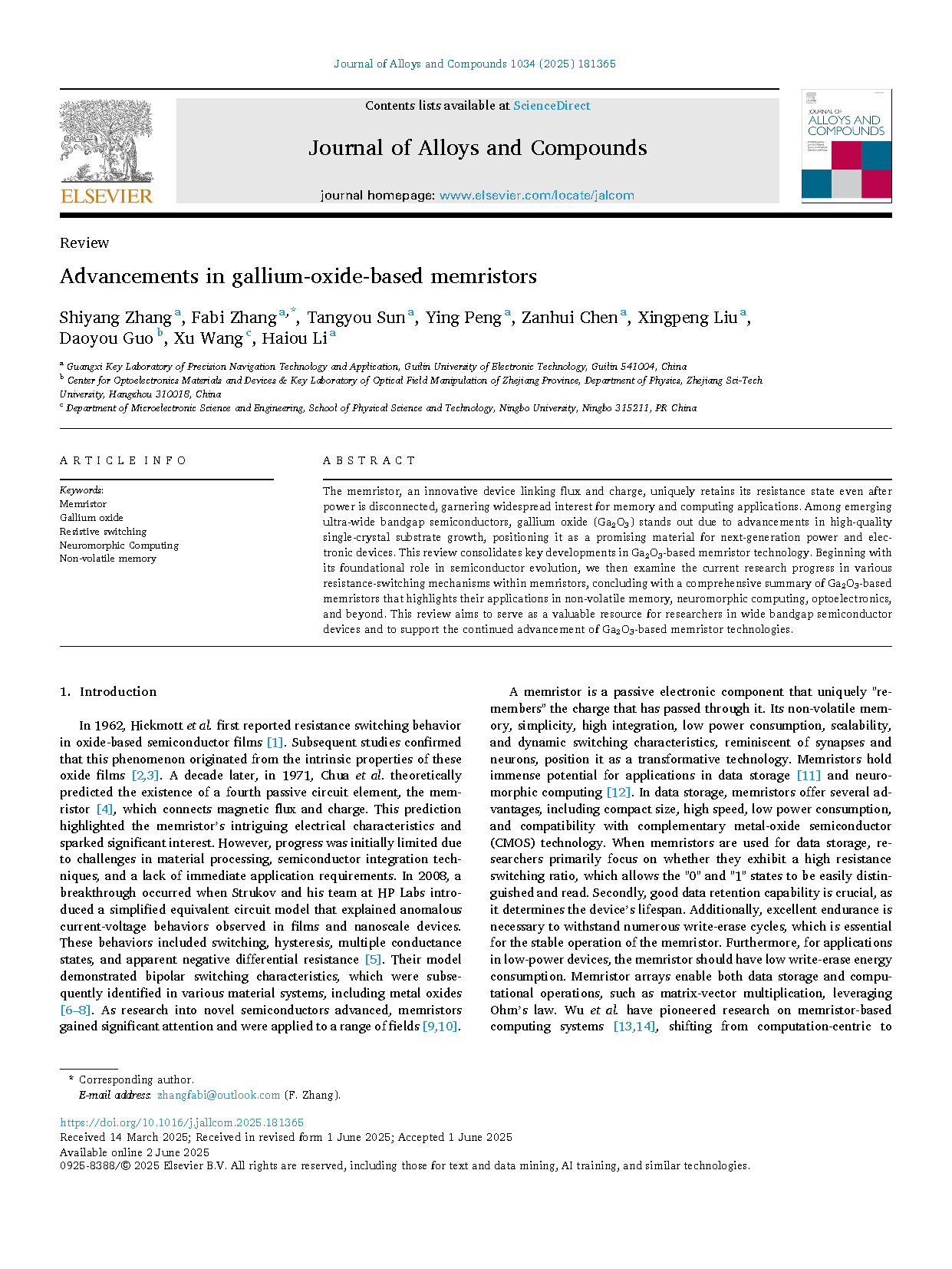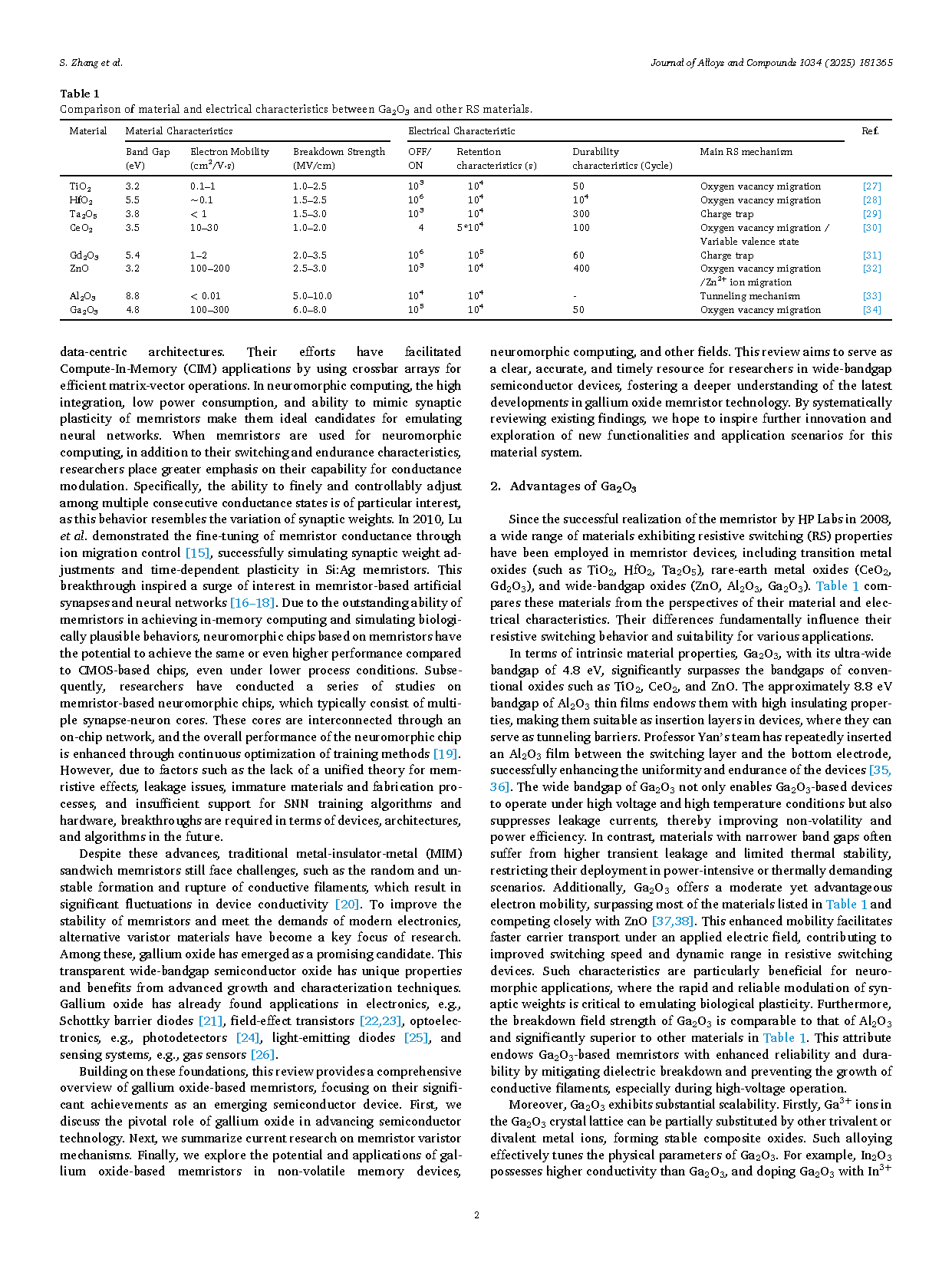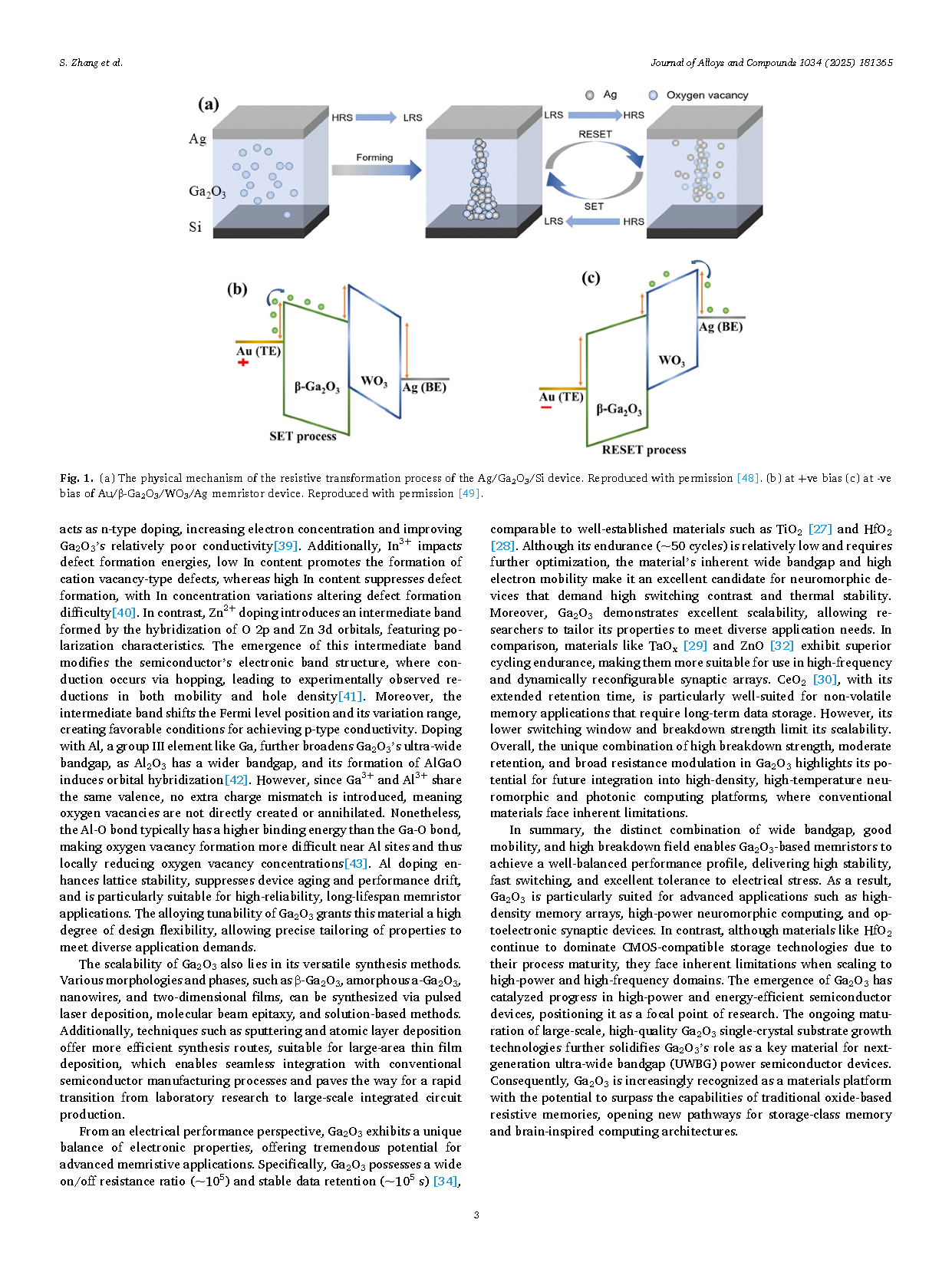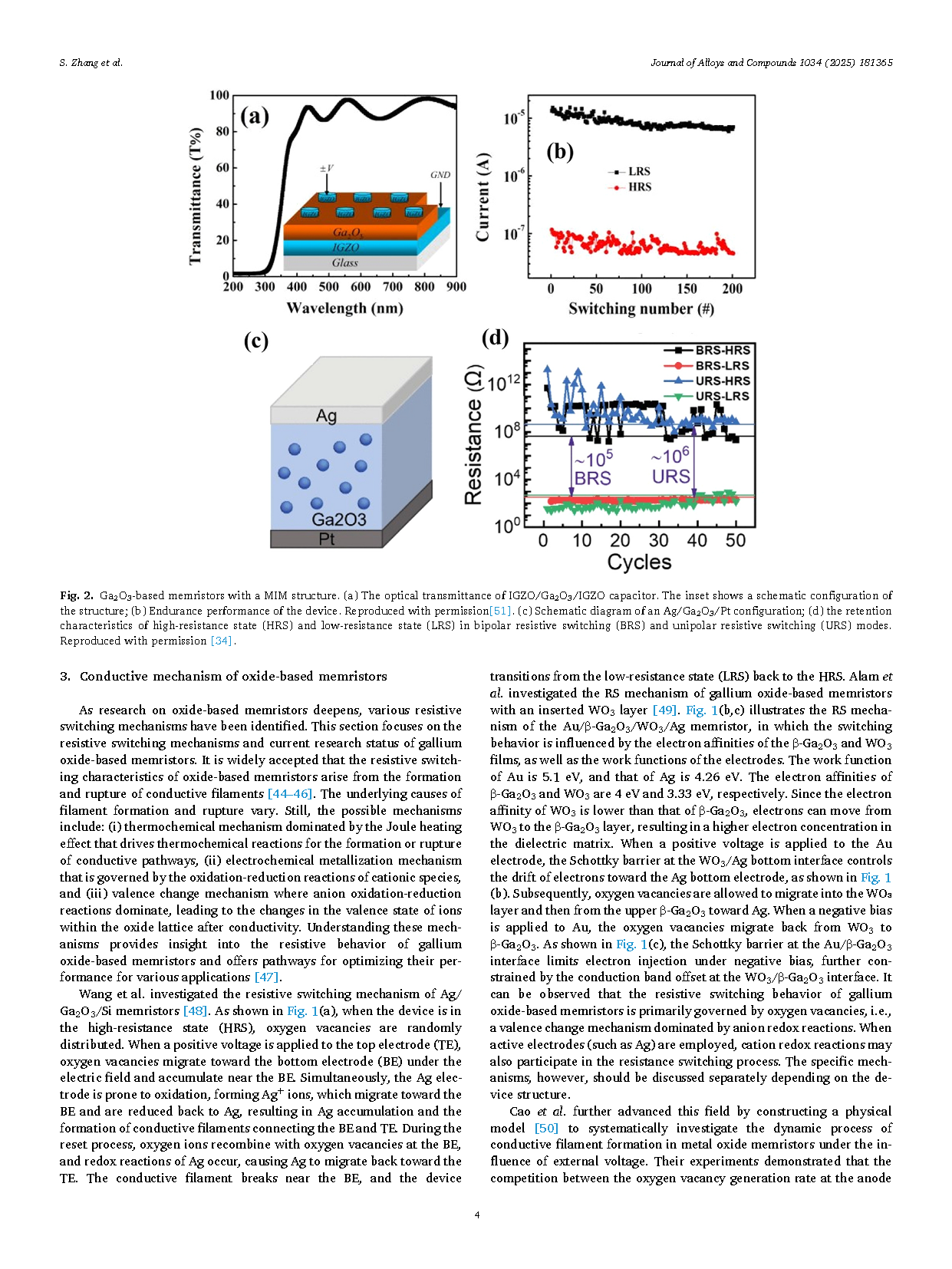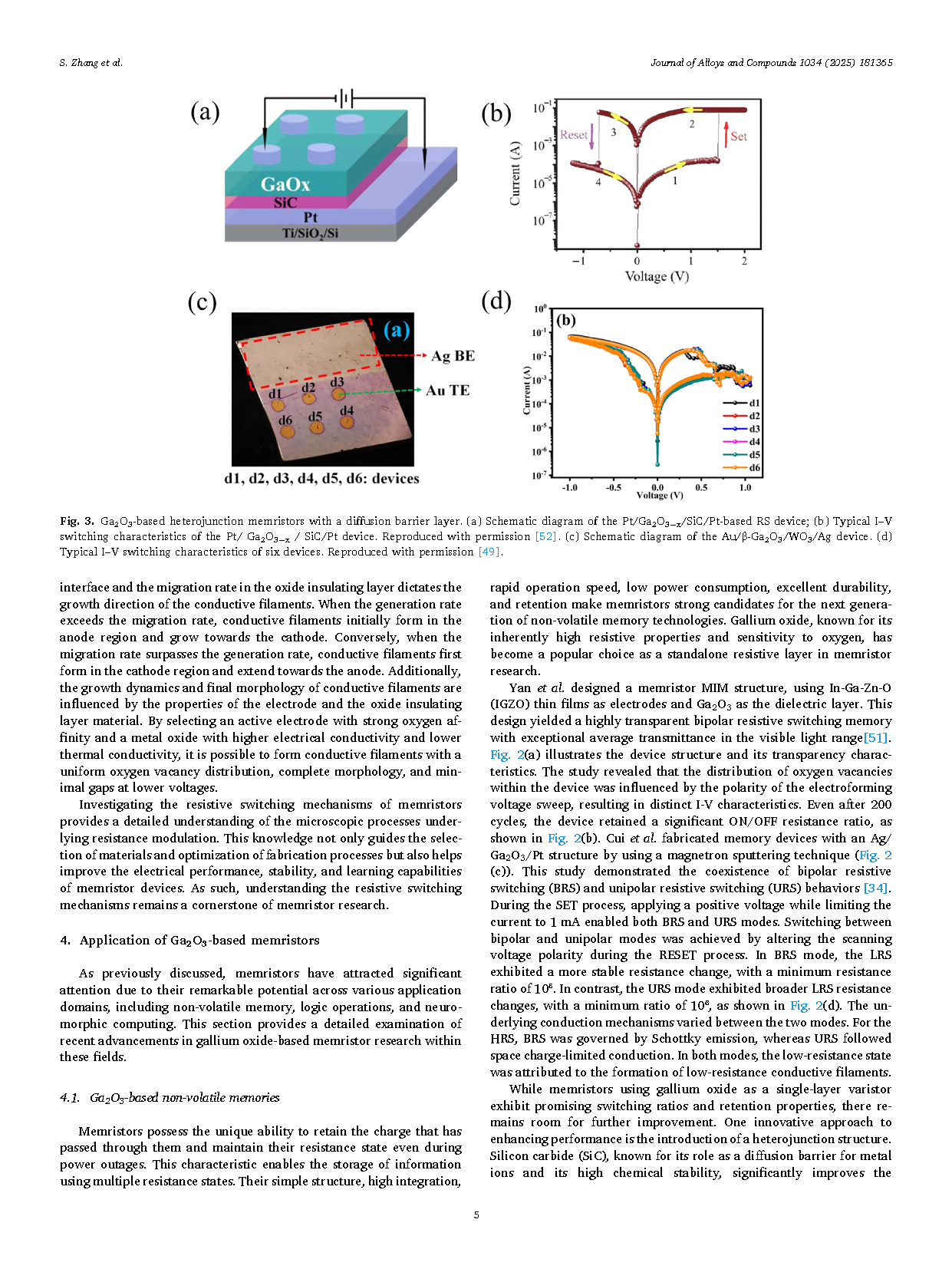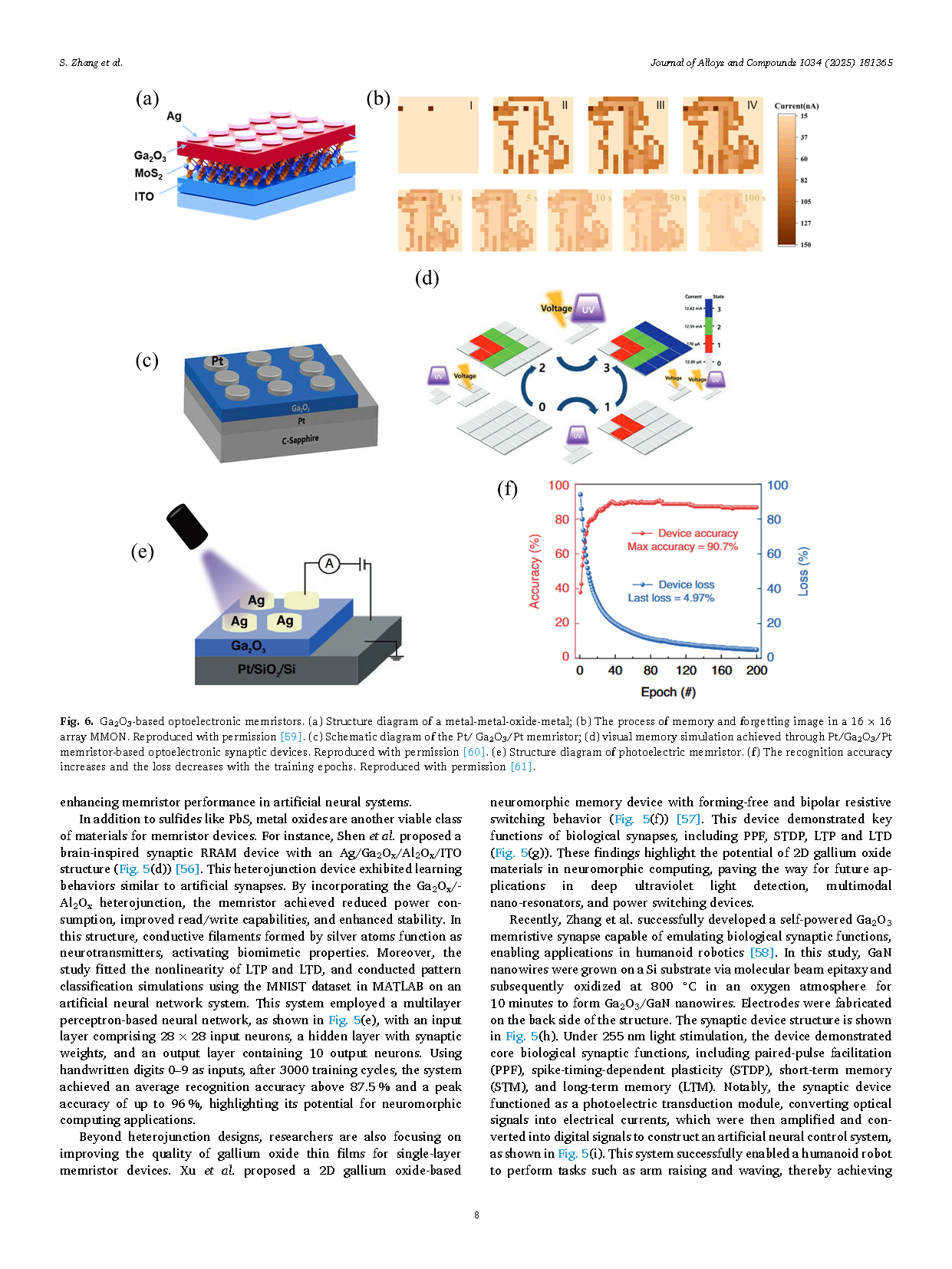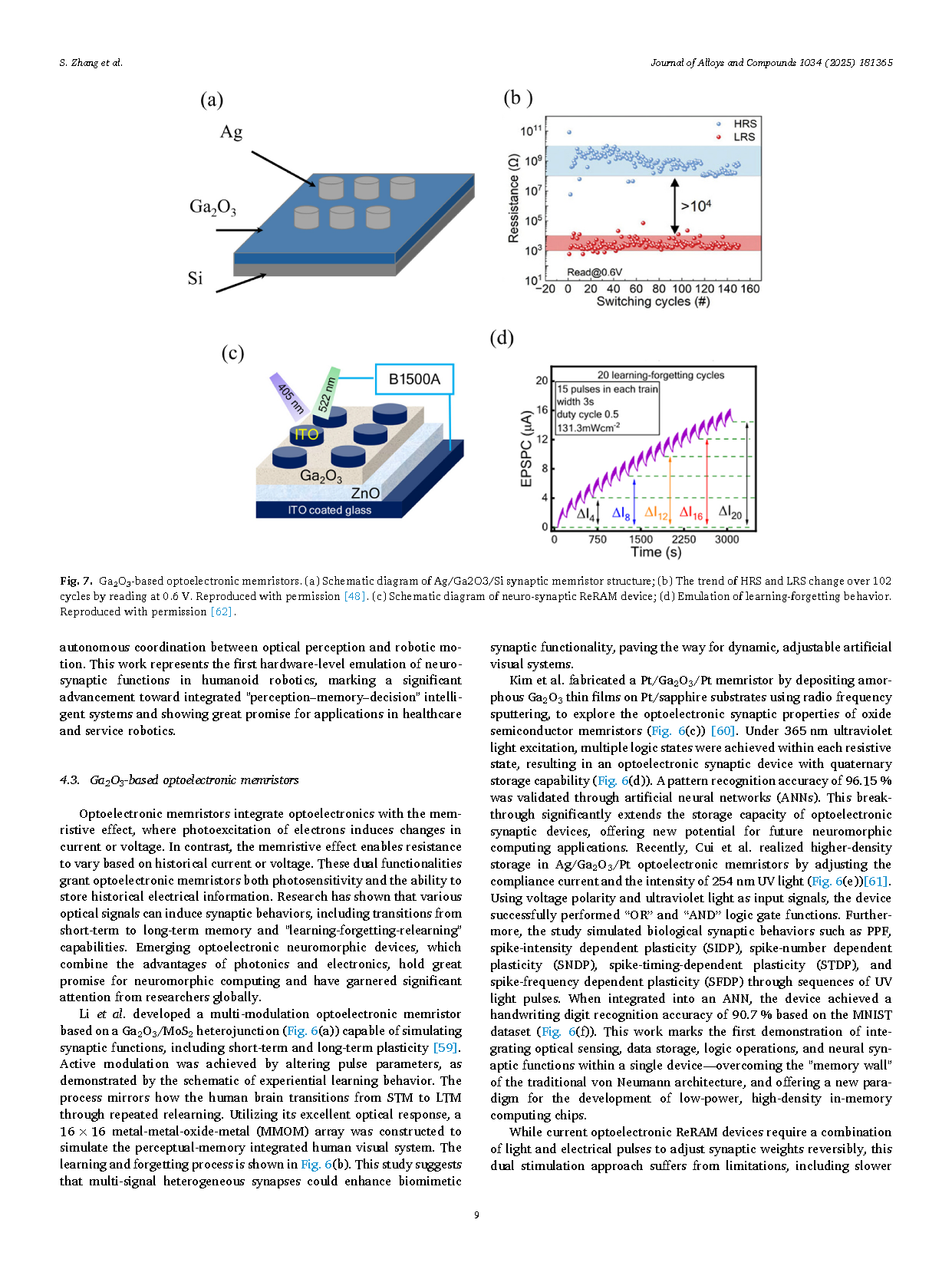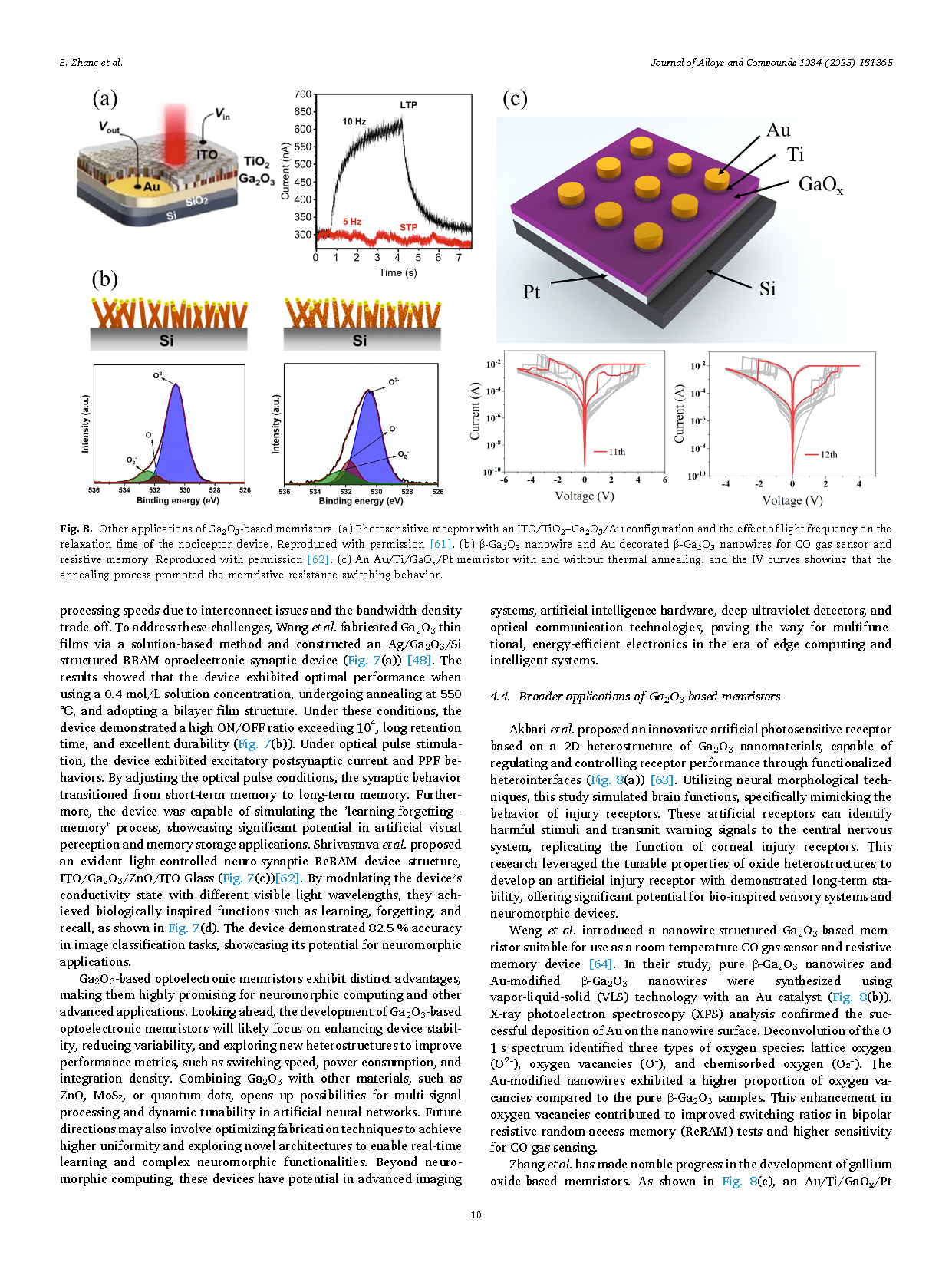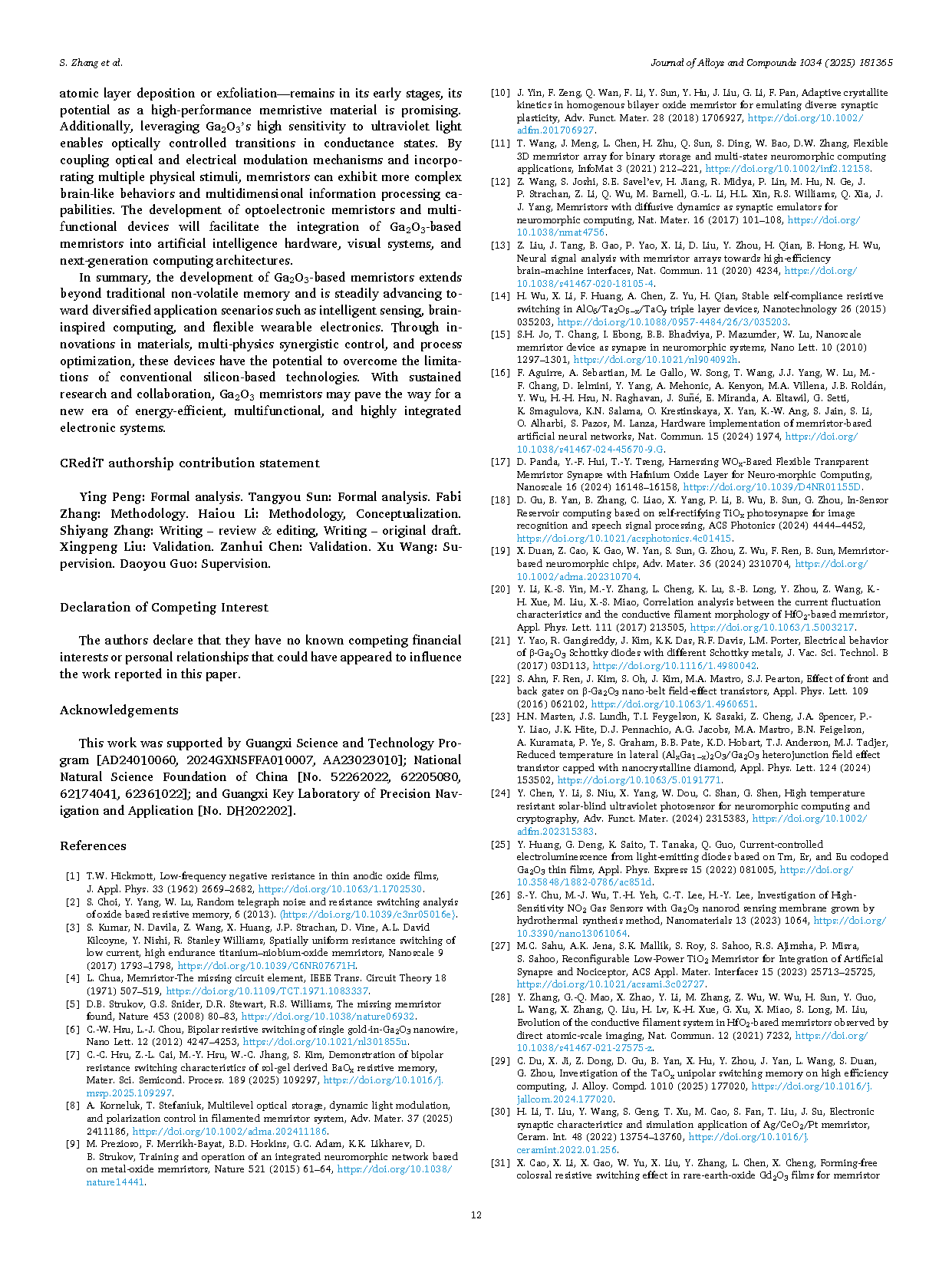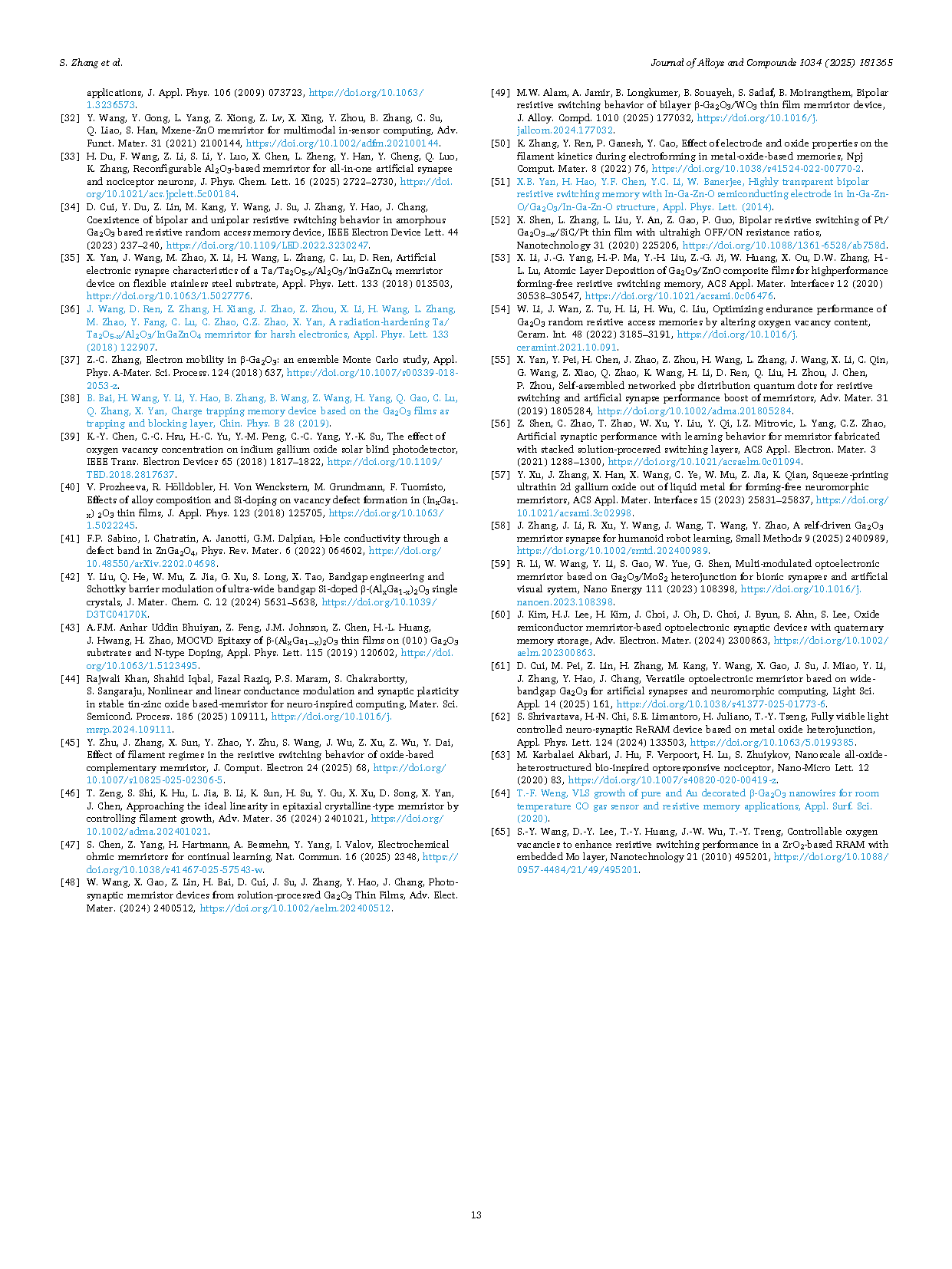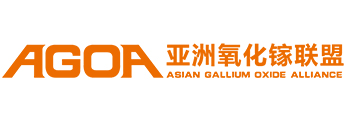

【Member Papers】Guilin University of Electronic Technology---Advancements in gallium-oxide-based memristors
日期:2025-06-09阅读:350
Researchers from the Guilin University of Electronic Technology have published a dissertation titled "Advancements in gallium-oxide-based memristors" in Journal of Alloys and Compounds.
Background
In 1962, Hickmott et al. first reported resistance switching behavior in oxide-based semiconductor films. Subsequent studies confirmed that this phenomenon originated from the intrinsic properties of these oxide films. A decade later, in 1971, Chua et al. theoretically predicted the existence of a fourth passive circuit element, the memristor, which connects magnetic flux and charge. This prediction highlighted the memristor's intriguing electrical characteristics and sparked significant interest. However, progress was initially limited due to challenges in material processing, semiconductor integration techniques, and a lack of immediate application requirements. In 2008, a breakthrough occurred when Strukov and his team at HP Labs introduced a simplified equivalent circuit model that explained anomalous current-voltage behaviors observed in films and nanoscale devices. These behaviors included switching, hysteresis, multiple conductance states, and apparent negative differential resistance. Their model demonstrated bipolar switching characteristics, which were subsequently identified in various material systems, including metal oxides. As research into novel semiconductors advanced, memristors gained significant attention and were applied to a range of fields.
Abstract
The memristor, an innovative device linking flux and charge, uniquely retains its resistance state even after power is disconnected, garnering widespread interest for memory and computing applications. Among emerging ultra-wide bandgap semiconductors, gallium oxide (Ga2O3) stands out due to advancements in high-quality single-crystal substrate growth, positioning it as a promising material for next-generation power and electronic devices. This review consolidates key developments in Ga2O3-based memristor technology. Beginning with its foundational role in semiconductor evolution, we then examine the current research progress in various resistance-switching mechanisms within memristors, concluding with a comprehensive summary of Ga2O3-based memristors that highlights their applications in non-volatile memory, neuromorphic computing, optoelectronics, and beyond. This review aims to serve as a valuable resource for researchers in wide bandgap semiconductor devices and to support the continued advancement of Ga2O3-based memristor technologies.
Summary
In summary, the development of Ga2O3-based memristors extends beyond traditional non-volatile memory and is steadily advancing toward diversified application scenarios such as intelligent sensing, brain-inspired computing, and flexible wearable electronics. Through innovations in materials, multi-physics synergistic control, and process optimization, these devices have the potential to overcome the limitations of conventional silicon-based technologies. With sustained research and collaboration, Ga2O3 memristors may pave the way for a new era of energy-efficient, multifunctional, and highly integrated electronic systems.

Fig. 1: (a) The physical mechanism of the resistive transformation process of the Ag/Ga2O3/Si device. Reproduced with permission. (b) at +ve bias (c) at -ve bias of Au/β-Ga2O3/WO3/Ag memristor device. Reproduced with permission.
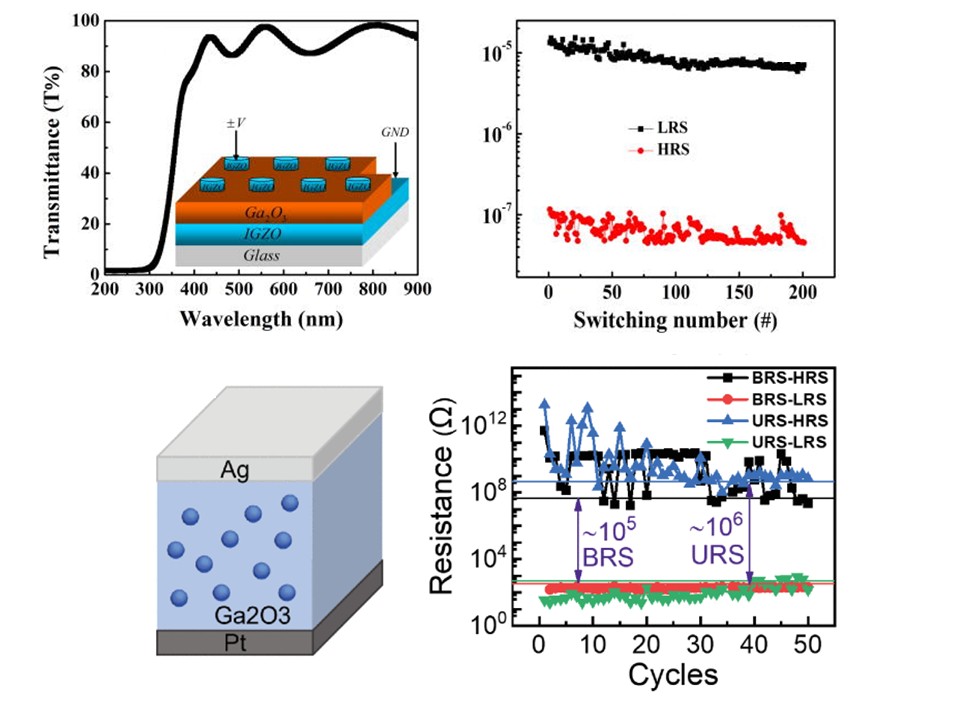
Fig. 2: Ga2O3-based memristors with a MIM structure. (a) The optical transmittance of IGZO/Ga2O3/IGZO capacitor. The inset shows a schematic configuration of the structure; (b) Endurance performance of the device. Reproduced with permission. (c) Schematic diagram of an Ag/Ga2O3/Pt configuration; (d) the retention characteristics of high-resistance state (HRS) and low-resistance state (LRS) in bipolar resistive switching (BRS) and unipolar resistive switching (URS) modes. Reproduced with permission.
DOI:
doi.org/10.1016/j.jallcom.2025.181365
